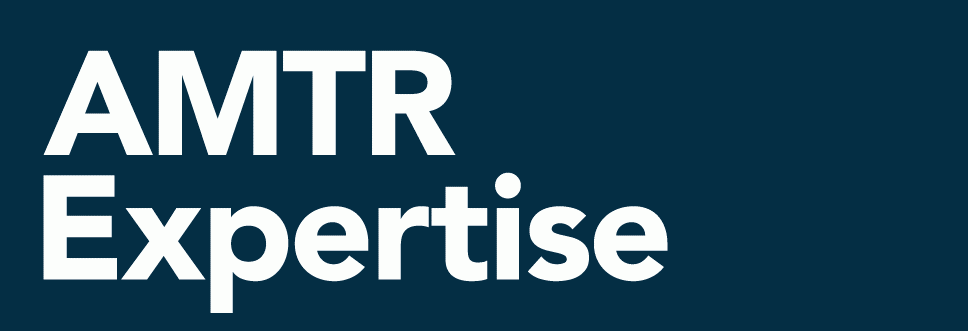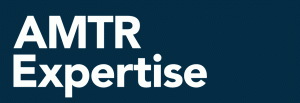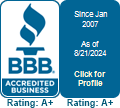This month, the Surface Transportation Board (STB) will be considering a petition filed by the National Industrial Transportation League (NITL) seeking revised reciprocal switching rules. This issue is most important to captive shippers that, because of location, do not have access to multiple railroads, and thus cannot enjoy the benefits of market competition. If the petition wins STB approval, it will allow captive shippers a competitive choice when shipping rail freight. However, no matter which way the issue is decided, the proper application of switching charges is usually difficult to ascertain.
As the end of the year quickly approaches, many national and regional LTL carriers are announcing yearly general rate increases. Among these carriers are UPS Freight and FedEx Freight, who have each announced 4.9% net increases to go into effect December 26, 2016 and January 2, 2017, respectively. FedEx will also be adjusting their fuel surcharge schedule in February. ABF announced a 5.25% increase and YRC announced a 4.9% increase, which have both already gone into effect over the past several weeks. As the year wraps up, shippers can expect to see similar increases from other carriers for their general rates and possibly other charges such as fuel or accessorials.
As cooler weather approaches, shippers of temperature-sensitive products will have to decide which commodities will need to be protected, how to get it accomplished and when. Most trucking companies offer services designed to keep materials from freezing by utilizing warm rooms, sheltered areas, heated trailers and insulating materials. However, ensuring that the shipment qualifies for the service, that the request was made in the accepted manner and that it has been billed properly can all be tricky.
Carriers typically offer freeze protect service beginning in October and ending in April. They may disqualify certain shipments from eligibility or will have very specific guidelines on how the service must be requested in order to qualify for the protection. However, do not assume that because it has been specifically requested on the bill of lading, that the service is being performed. If the service is not requested as per the carrier’s guidelines, protection services may not be performed and shippers could face unintentional consequences when a product does freeze and a filed claim is denied. Don’t be left out in the cold—let AMTR’s ‘Smart’ auditors review your freight invoices.
At AMTR, we have seen dozens of examples of how these departments sometimes cause inconsistencies with invoicing. In order to operate efficiently, there must be established rules about car contingency and power, routing protocols, track capacity, railhead points and more. However, marketing will negotiate private rates or publish tariff rates based on such aspects as commodity, location, volume or supply and demand.
Sometimes two or more railroads will establish a separate set of protocols in an attempt to operate more efficiently between their lines. Some examples of this will be agreements on handling traffic to and from congested railheads that are jointly served, or agreeing to connect at a city other than a major gateway for ease in transit. Many of these agreements are not known to the public, but are programmed into the algorithms and rate engines of the carriers without being made known to rate makers. Generic rules are published to handle some of these topics, but occasionally rates are contracted or published without taking operational issues into consideration.
At AMTR, we bring these types of scenarios to the client’s attention to discuss the intent of their agreements with the carrier. In some circumstances we will even contact the railroad to discuss the reasoning behind some published lanes, or exclusion of lanes. Combining these two entities is an important factor we use while reviewing freight invoices to ensure that loads operate at maximum efficiency, while paying or collecting the most reasonable rate.
Although the word “noise” may first bring to mind the idea of train whistles or truck horns, at AMTR we think about it differently. In a recent Harvard Business Review article, authors Daniel Kahneman, et al. described noise as “the chance variability of judgments.” Humans are often unreliable decision-makers influenced by unrecognized factors such as mood, hunger, work conditions and even temperature. Unfortunately in business, noise can be costly to the bottom line.
When decision-making situations are black and white, noise can be reduced by turning to algorithms, but gray decision-making domains such as algorithmic solutions only exacerbate the negative impact to the bottom line. In the realm of freight cost auditing, AMTR acknowledges there is a role for “un-noisy” rate engine algorithms; however, our 30+ years of experience has proven a human expert, knowledge-based approach leads to far greater audit results and freight overcharge returns.
Rate engine algorithms can only address the most basic, codifiable and repeatable freight scenarios, where human auditors are free to explore unlimited variations, situations and combinations. Given our human-centered approach, we still work diligently to decrease judgmental noise by employing Smart Auditing® processes that promote discipline, consistency and standardization across our auditors and audits. Contact us to learn more about how AMTR turns down the noise and can up the volume on your audits today!
BNSF Railway has announced a new service option to allow intermodal customers to transport freight between Texas and the Pacific Northwest beginning September 12. With extended access to the largest markets in Texas, this new service will be available for domestic containers, trailers and temperature-controlled freight and is part of BNSF’s continued focus on expanding network capacity and service capabilities for their customers.
This new, faster service offering is the first of several new scheduled projects to be rolled out over the next year. Shippers should stay aware of new service offerings, as they might lead to cheaper and timelier opportunities.
On August 4, 2016 the American Trucking Associations (ATA) released the newest edition of the only existing trucking almanac–ATA American Trucking Trends 2016. The report concluded that there was positive growth in employment, number of drivers, trucking revenue and truck sales in 2015.
According to the ATA report, trucking accounted for $726.4 billion in gross freight revenue (81.5% of the nation’s freight in 2015); trucks hauled 10.49 tons of freight (70.1% of domestic freight tonnage); and 3.63 million Class 8 trucks in operation. These significant figures verify the necessity of truck drivers and companies to keep driving the economy. “While the first half of 2016 has been challenging for the industry, trucking is coming off two very strong years and we are optimistic about the future,” stated ATA Chief Economist Bob Costello.
You can find more information about Trends at trucking.org.
We do!
Increasingly, tariffs and contracts are created either automatically or by copying and pasting bits and pieces. Either way, AMTR’s expert auditors spend a great deal of time auditing the contracts and tariffs themselves, in addition to auditing freight bills and freight bill data. There are instances where errors in the actual contract or tariff occur. This is a practice unique to AMTR’s “Smart” Audits. Carriers usually have no knowledge of these errors until claims are filed on our client’s behalf. Writing contracts and tariffs is not an easy job, especially given the volume of tariffs and contracts that a carrier has to create and update on a daily basis. Undoubtedly, the writers are overwhelmed and rushed; however, customers are usually the ones who suffer for it, and in many cases only a trained and experienced freight cost auditor can discover all of these issues. Let AMTR invest our time into saving you money.
If you’re versed in the transportation industry’s current state, you have likely heard the phrase “capacity crunch.” With the experts predicting that there will continue to be significant increases in goods moved by truck, carriers are monitoring and adjusting their shipments to ensure that the capacity available is strategically being used. When it is not, a shipper is going to pay for the unusable area in which no other freight can be loaded by the carrier. This scenario often occurs when products or palletized shipments are tall, wide or long.
Even though customers may have agreed upon pricing with carriers, they will be subject to the carrier’s rules tariff in which there are exceptions that may apply if the shipment qualifies. Within the tariff, there may be clauses that allow the calculation of the shipment’s required cubic footage to actually be 96 inches high or wide. Also, when a shipment requires 20 feet or more of floor space or weighs 20,000 pounds or more, or when an article of the same dimensions hypothetically cannot be placed in the same trailer, the shipment may be subject to a capacity load charge. Carriers often have rules stating that, for a certain amount of cubic footage, a minimum density must be met. When the minimum is not met, the carrier will apply charges to the freight bill to reflect the minimum density. This is referred to as a density minimum charge shipment. Shippers could also be facing lineal foot charges if a shipment reaches a certain length in the trailer. This could be very costly, as it is often based on a certain rate per mile.
The rules mentioned above can quickly result in higher shipping costs. Capacity rules are sometimes concluded by stating that if applicable pricing calculations result in lower charges than the customer’s specific pricing does, then the greater of the two charges will apply. Understanding the qualifiers, determining configurations, pricing calculations and any exceptions that exist can easily become overwhelming. Our “Smart” Auditors handle these types of invoices on a daily basis and can determine if you are being overcharged. Let AMTR ensure that you are only paying for what is applicable to the shipment and nothing more.
What does “value” mean to you? Lowest price? Highest quality? Something else? If you are not exactly sure, know that you are not alone. Recent conversations with some of our current and prospective customers remind us that the value of an
After-Payment Freight Audit, especially an AMTR Audit, is not always well understood.
To explore the idea of value, we will begin with price. It is often said that “price” is what one pays for a given product or service while “value” is what any given product or service is worth. Worth can be measured in many ways—in financial terms, productivity terms, emotional terms, etc. When shopping for an After-Payment Freight Audit, it is important that customers consider both price and value. At AMTR, our price comes in the form of a percentage of freight overcharge recoveries, but we work hard to create additional value for our customers beyond the basic audit by: 1) establishing close, personal relationships with our transportation experts, 2) providing customer-specific audits and analysis, 3) offering best-practice and optimization recommendations, 4) committing time to problem investigation that customers cannot, and 5) offering comprehensive claims management to name just a few.
So, when considering After-Payment Freight Audit services, be wary of making decisions based on price alone. Think about what the services mentioned above would be worth to your company. Get “Smart” and explore the value AMTR can offer your
company today!














